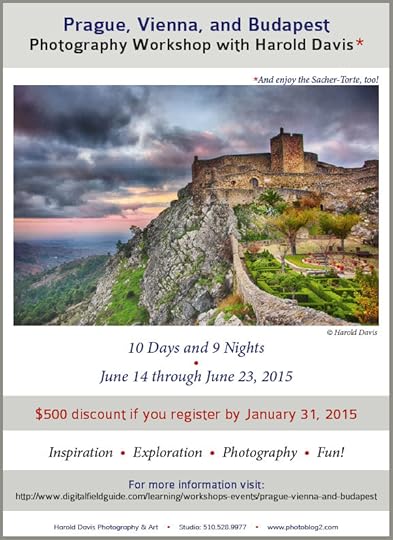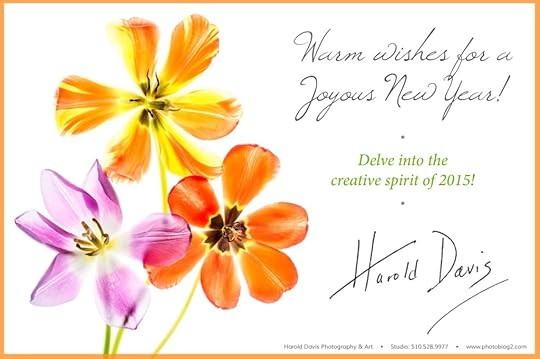Harold Davis's Blog, page 166
January 10, 2015
Prague, Vienna, and Budapest Photography Workshop
Early-registration discount of $500 has been extended until January 31!
Click here for a Prospectus, here for registration, and here to download a PDF version of this card. If you are interested in travel photography you may like my Making Memorable Travel Photos webinar recording.
About Prague: “One of Europe’s best-preserved cities, Prague has a romantic riverside location enhanced by graceful bridges and a magnificent skyline punctuated with medieval church spires. Its historic Old Town follows a plan laid out 1,000 years ago, with ancient squares and winding cobblestone streets. Haunting Prague Castle looms large across the Vltava River, rising above the exquisite CharlesBridge. Add extravagant, fairy-tale architecture; memorable classical music; and, these days, good food and drink, and it’s easy to see why Prague charms everyone who visits.”—Fodor Prague Travel Guide
About Vienna: “Virtually any activity you might undertake in the city — strolling through a museum, sipping coffee or shopping for shoes — will leave you feeling pampered and a little envious of the indulgent style to which the Viennese seem so accustomed. This is, after all, the city where chocolate cake and sparkling wine are an appropriate snack at any hour, where the Wiener schnitzel is typically bigger than the plate on which it’s served, and where residents all know how to waltz.”—Andrew Ferren, What to do in Vienna, New York Times, 12/31/2014
We will travel from Vienna to Budapest via hydrofoil down the Danube River.
About Budapest: “Budapest was the most fascinating city I visited this year…. Pest—on the mighty Danube’s eastern bank—has the coolest street art and graffiti on historic buildings, and “ruin bars” are the place to go at night because they are decorated with re-purposed and mismatched items in old indoor/outdoor spaces. If you’re a film fan, stay at the Corinthia Hotel Budapest, the reported muse for Wes Anderson’s The Grand Budapest Hotel.”—Andrea Leitch, Producer, National Geographic Travel
January 9, 2015
Megaliths Modern and Ancient
There are probably more neolithic sites in Portugal than anywhere else in Europe. While I was trying to locate a large neolithic site near Evora, Samantha guided me beneath a freeway. Highways like this in Portugal are great for long distance travelers—they automatically dock the toll out of a device in your car—but carry little traffic and are essentially public works projects that are highways to nowhere.

Freeway to nowhere © Harold Davis
Staring up at the freeway silhouetted to infinity against the sky, I mused on how ephemeral it all is. The megalith shown below is from a neolithic installation that is perhaps 25,000 years old. No one knows what it really was for; maybe, like Stonehenge it was part of some kind of large astronomical measurement site. For neolithic man, moving these huge stones into position on a hillside surrounded by cork trees must have been a tremendous undertaking.
In years to come, freeways to nowhere may also decay, get covered with lichen, disconnect and become fragmentary. Then people from the future (if there are any) may wonder about who built these huge structure at such great effort, and to what end (does the gap stretching towards infinity between the lanes point at a specific star?)
The poet Percy Bysshe Shelley put this best in Ozymandius (written in the early 1800s):
I met a traveller from an antique land,
Who said—“Two vast and trunkless legs of stone
Stand in the desert. . . . Near them, on the sand,
Half sunk a shattered visage lies, whose frown,
And wrinkled lip, and sneer of cold command,
Tell that its sculptor well those passions read
Which yet survive, stamped on these lifeless things,
The hand that mocked them, and the heart that fed;
And on the pedestal, these words appear:
My name is Ozymandias, King of Kings;
Look on my Works, ye Mighty, and despair!
Nothing beside remains. Round the decay
Of that colossal Wreck, boundless and bare
The lone and level sands stretch far away.”
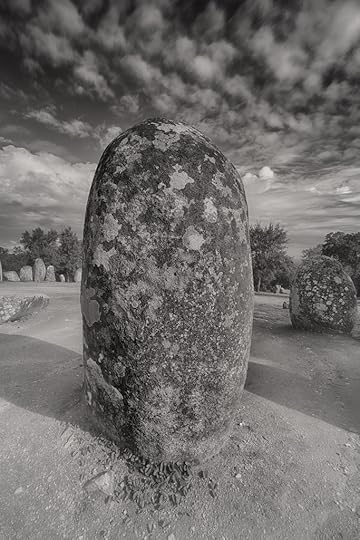
Megalith © Harold Davis
January 8, 2015
Castelo Marvao
Late on a frigid November afternoon I checked into the Pousada Santa Maria—a converted convent—in the eagle-nest town of Marvao, Portugal. I was the only guest at the hotel. I dropped my bags in my room, dressed in every layer I had with me, grabbed my camera and tripod, and headed out into the oncoming evening to photograph.
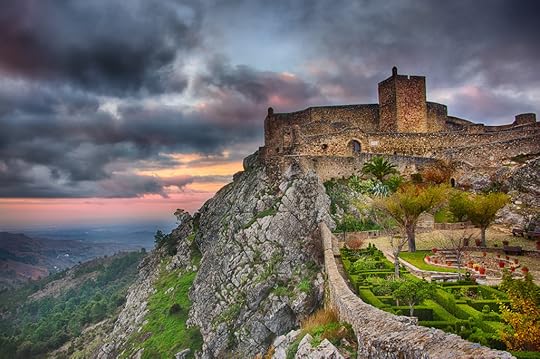
Castelo Marvao © Harold Davis
High above the Iberian plain, and facing the Spanish border, Marvao has been a refuge from time out of mind. During the Roman era, star-crossed lovers are said to have fled the wrath of armies and settled on these heights. Their descendants added successive fortifications, leading to the castle you see in the photo, protecting a small white-washed village that clings nearby.
On the ramparts of the castle it was getting even colder, and the wind was picking up. I made my way to the top tower of the castle and watched the last of the sunset, and the lights of the village below come on, secure knowing I had my headlamp with me. The clouds swirled in, and I was alone in a white-out.
Back at the hotel, I warmed up in the lounge, waiting for the dining room to open. Its late hours were typical of dining in Portugal. Had it been light, and but for the fog, I would have been able to see hundreds of miles across Spain during my long and mediocre meal. My server wheezed and sniffled and told me, “We all are sick here, it is always cold, even in summer.”
As it was, I was grateful for my warm bed, and grateful that I had seized the last light to photograph this incredibly romantic landscape!
Related stories: Travels with Samantha; Terraces in Portugal; Rats at Mafra.
January 7, 2015
Come join me to photograph flowers in Maine this summer!
I’ll be presenting a full week of Creative Flower Photography—including Photographing Flowers for Transparency on a light box—at Maine Media Workshop in Rockport on the beautiful coast of Maine from August 2-8, 2015. Many of my east coast friends who have asked when I’ll be giving this workshop closer to them; if this is you, here is your chance. Since there are only 14 spots in the workshop, my suspicion is that it will fill fast. Click here for information and registration. I am really looking forward to photographing flowers with you on the coast of Maine in the summertime, when botanicals should be lush and gorgeous.
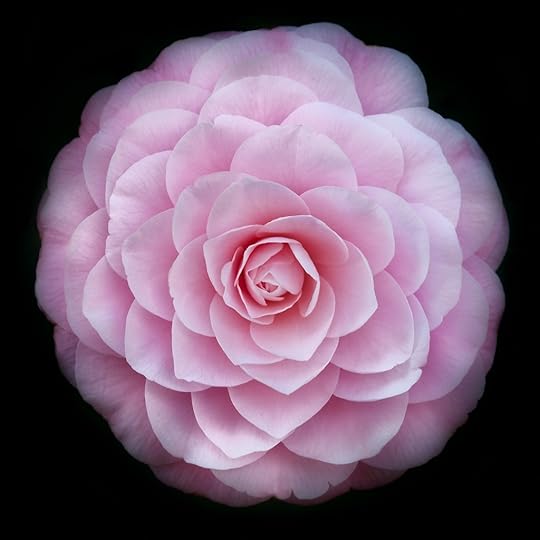
Camellia japonica © Harold Davis
Workshop description: In this unique, 5-day workshop offering, Harold Davis shows the techniques he pioneered to create his floral masterpieces. Arrangement, composition, photography, and post-production will all be covered, as will Harold’s special techniques for shooting on a light box. In addition, several sessions will explore field floral photography, and alternative techniques related to the studio photography of flowers. Harold will also show his spectacular botanical prints in the context of a discussion of the best way to create prints of floral imagery.
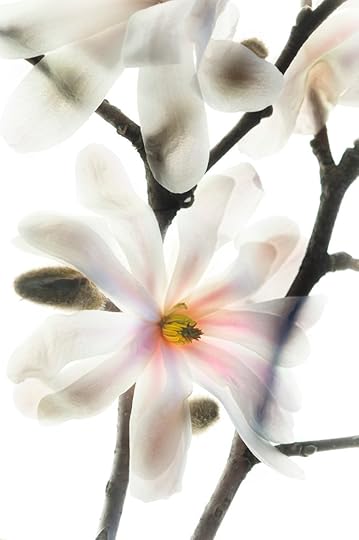
Star Magnolia 2 © Harold Davis
Topics covered include:
Understanding transparency and translucency
Introduction to floral arrangement and composition
Botanical art in the digital era
Shooting florals in the field
Creative field techniques
Best practices in macro photography
Shooting flowers on a dark background
Shooting on a light box
Understanding high-key post-production
Working with Photoshop layers
High-key HDR
LAB color effects
Backgrounds and textures
Preparing to make floral pigment prints
Tips & techniques from Harold Davis
Implementing one’s own vision
Registration and info: August 2-8, 2015; limited to 14 participants; $1,245 workshop fee; link for information and registration.

Bounty of the Garden © Harold Davis
January 5, 2015
Workshop Updates
The new year means new beginnings, and is a good time to take stock of the schedule details and changes related to my workshops that you may want to know about!
Photograph Prague, Vienna and Budapest in June 2015: early-registration discount ($500) ends January 15, 2015. Click here for more info. If you do have an interest in coming on this photographic tour, please register early and take advantage of the discount.
Night Photography in San Francisco, Feb 20-22, 2015: I’m really excited about this one, it will be great fun, filling fast but still some places. Click here for more info.
Sea-Girt Villages of Italy Photography Adventure: the dates have changed slightly on this one. The new dates are Oct 28 – Nov 11, 2015. This is a unique opportunity to visit many photographic “bucket list” locations with me. Click here for more info.
I have new 2015 workshops in the offing sponsored by Point Reyes Field Seminars, Heidelberg Summer School of Photography and Maine Media Workshops. Please check my Workshops & Events page for details.
Let us know if you have any question about any of these workshops, or need help with registration. Hope to see you there, and best wishes for a great year in photography!
If you’ve enjoyed one of my workshops, please consider helping us out by referring a photographic friend. By way of thanks, if you refer someone who registers in one of the workshops we sponsor I will be happy to send you a signed copy of one of my books (your choice)!

Autumn Arbor © Harold Davis
January 3, 2015
Drowning in a Plethora of Stuff
As the father of four kids with ages from six to seventeen it is not hard for me to feel like I am drowning in a plethora of stuff. Each child brings home tons of things that are often on that borderline between something one really doesn’t want to curate long term, but too cute to toss.
Leaving my kids out of it, there’s simply too much stuff around.
This is particularly egregious when the stuff is “mall junk” made in China: things we don’t really need, created with no concern for the environment, using slave labor.

Leather Dye Pits, Fez © Harold Davis
To inveigle against cheaply made plastic junk that is essentially a by-product of our thoughtless petroleum-based society is easy. This stuff will come to rest in a landfill somewhere, and will not enhance our spirituality, nor give us meaning in our lives, nor add beauty to our lives, nor increase our connection with other people.
Writers and thinkers such as Thoreau and Tolstoy have, to a greater or lesser extent, used the fruits of a stuff-based civilization to warn that stuff doesn’t bring happiness. Even comedians get into the act, with an entire George Carlin shtick based on the premise that stuff pervades our lives, simultaneously attracting and imprisoning us.
But does this knowledge help us avoid over-accumulation of things, make us wise, or tell us how to build a better life? Not really. There are no easy answers.

Gran Via, Barcelona © Harold Davis
First, the world may be drowning in stuff, but some parts of this interconnected world are “a lot more equal than others” (in the words of George Orwell). People without shelter or food want more stuff, not less stuff, and are often subsisting on stuff discarded by others.
What happens when “stuff” goes online and becomes virtual?
The race to build virtual stuff, and to provide easier virtual access to this stuff, is a race to the bottom. Everyone can be a “published” writer on Amazon. There are more than 700,000 images in the virtual inventory at Art.com; this imagery ranges from stock photography to reproductions of van Gogh paintings, all available as inexpensive reproductions.
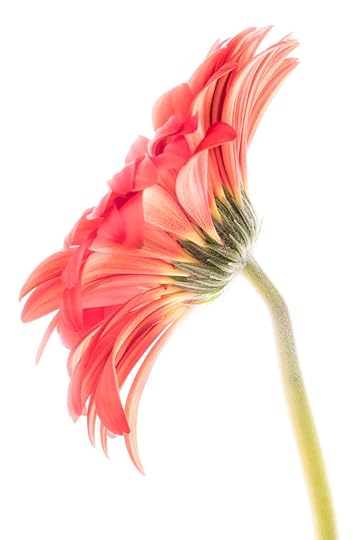
Gerbera Sideways © Harold Davis
How do you navigate through the dross? What is the point of creating more words, or more imagery, to compete with this mélange of cheap stuff?
Do we want to spend our lives making things that are “just stuff”?
I think not.

White on white © Harold Davis
Whatever you do, however you do it, however much stuff is involved, be thoughtful and keep things simple. We don’t need more junk in this beautiful world of ours. We do need more work that is thoughtful, creates beauty, adds to our spiritual values, and fosters connections between people.
Eschewing hypocrisy and the hive mind that encourages rapacious consumption solely for the sake of consumption are good goals as well.
Why must people be so mean and greedy? If we did it right, there would be enough for all, without all the junk, and with beauty to spare.

Story of O © Harold Davis
December 31, 2014
Warm wishes for a joyous New Year!
Warm wishes for a joyous New Year! Delve into your creative spirit in 2015…
Click here for a PDF version of this card. Click here for My Best of 2014.
Not a Through Tree
There are streets that are through, and streets that are not through. Then there are trees that are through, and trees that are, well, not through. I guess with this tree if you climb it, or enter a secret chamber hidden in the trunk, you don’t get to pass through into another magical world.

Not a Through Tree © Harold Davis
Captured using my iPhone off Arlington Ave in Berkeley, California.
December 25, 2014
My Best of 2014
2014 has been an exciting year for me photographically, from many viewpoints, including the geographic and chronological. When I am not suffering from temporal displacement syndrome (otherwise known as jet lag), being lost in time and space has its virtues for a photographer—since so much of photography is about time and geographic locale, and feeling disconnected from each allows for much fruitful meditation, as well as consideration of the differences between cultures.
Compiling my annual best list of photos is a difficult exercise, but it helps me put the year in perspective, and last year’s Best of 2013 has remained one of the most popular stories on my blog throughout the subsequent year.
You are welcome to comment at the end of this story; also, please feel free to add a link in your comment to your own Best of 2014 photos. Editing is one of the most important aspects of the craft of photography, and compiling your own annual best list is a great way to exercise your editing skills.
This is my year in pictures. I am going to start with some flowers because, at home or abroad, I always enjoy creating botanical imagery. Here are some of my personal favorite flowers from the year, with other subject matter and places following the botanicals:
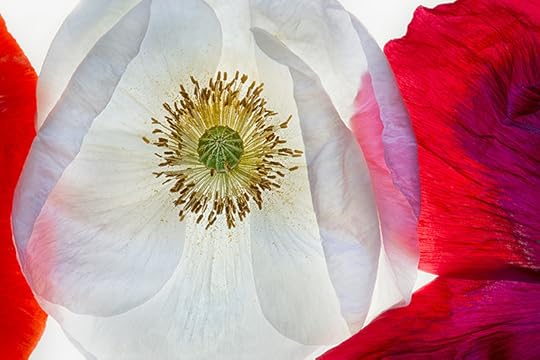
White Poppy © Harold Davis

Tulips on White © Harold Davis

Tulip Panorama © Harold Davis
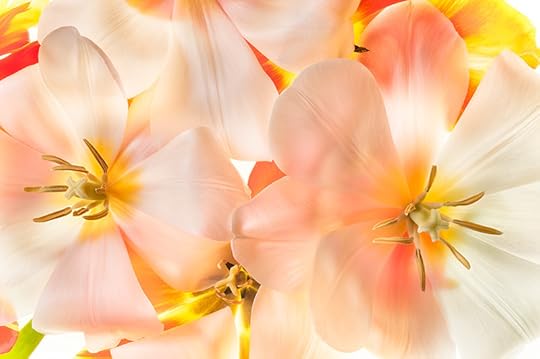
Tulips 1 © Harold Davis

Red Tulip, Giverny © Harold Davis

Into the Vortex of the Universe © Harold Davis

High-Key Tulips © Harold Davis
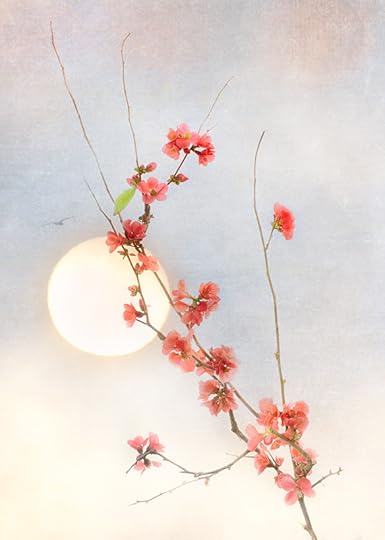
Flowering Quince © Harold Davis
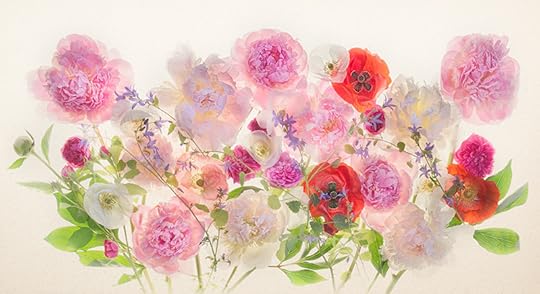
Bounty of the Garden © Harold Davis

Alstromeria Ballet © Harold Davis
Related stories: Flowers Category on the blog; White Poppy; We Happy Flower Few; Trio of Tulips at Giverny; Harold Davis posters from Editions Limited; Photographing Flowers for Transparency; Flowering Quince; What Flowers Are These?
There’s a natural progression from photographing flowers to Paris in the spring. Rainbows seem a good place to start. I was lucky enough to be out on the Pont Solferino footbridge as a spring rainstorm was coming to an end, and to capture this double rainbow over Paris and the Seine River.
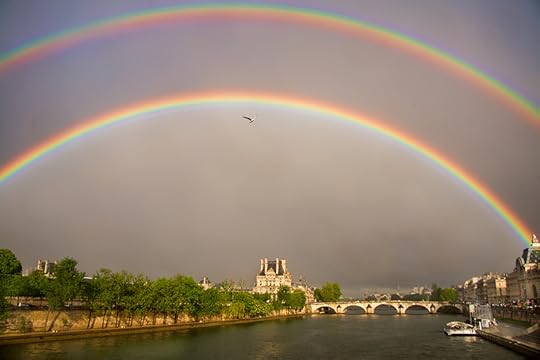
Double Rainbow over Paris © Harold Davis
Underneath the Pont Solferino there was action as well. I thought it looked like a stairway to heaven:
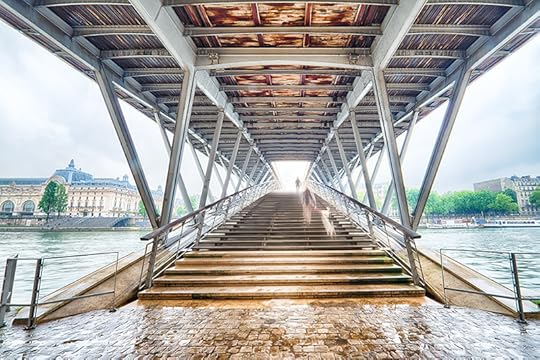
Pont Solferino © Harold Davis
On this trip to Paris my group stayed near the Seine, so photographing along the banks of the river and under the bridges was natural—generally using an exposure that played on time and motion. This one is a long exposure from Under the Pont de la Concorde:

Under the Pont de la Concorde © Harold Davis
Worth noting: for the first time, iPhone captures are creeping into my personal bests! I captured this image of Les Deux Magots, the famous St Germaine-des-Pres haunt of Hemingway and other literati back when one could afford to be bohemian in Paris, using my iPhone camera, and gleefully processed it using the latest apps to look old-fashioned to match the traditional costume of the waiter.
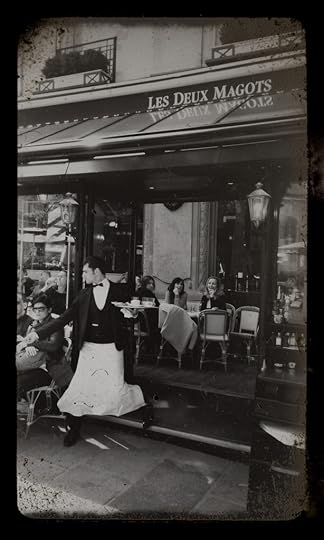
Les Deux Magots © Harold Davis
Back to the banks of the Seine River, in Behind the Wall I played with camera motion (rather than subject motion).

Behind the Wall © Harold Davis
Any way you slice it, Paris is a great city for night photography. I enjoyed the chance to shoot the skyline at dusk again from the Tour Montparnasse in Paris Sunset.
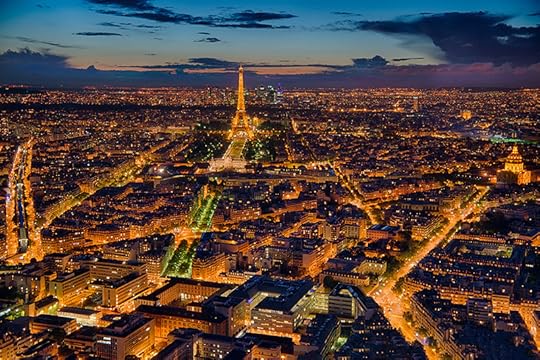
Paris Sunset © Harold Davis
Of course, the Pyramide in the central court of the Louvre is a wonderful subject for night photography, even if photographing Night at the Louvre does involve an occasional cat-and-mouse game with the tripod gendarmerie.
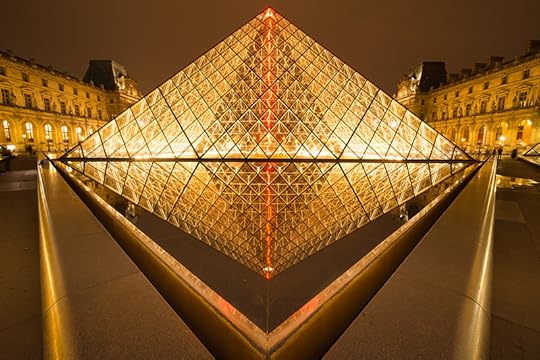
Pyramide © Harold Davis
You can see more of my Paris photography in the Paris category on my blog. I do also love to photograph the gardens that are a short excursion from Paris. An iPhone capture, and a more formal version, of one of the famous green bridges in Monet’s glorious garden at Giverny are shown below.

Giverny Waterlogue Watercolor © Harold Davis

Giverny © Harold Davis
Related stories: Giverny Waterlogue Watercolor; Giverny.
The Parc de Sceaux is accessible from Paris via the RER (suburban railway). To understand the title of this image, Ghosts in the Enchanted Garden, you’ll need to look at it carefully!
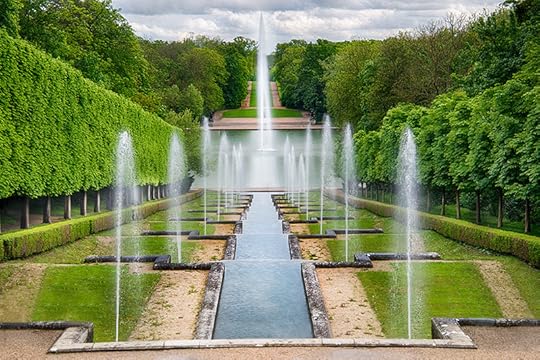
Ghosts in the Enchanted Garden © Harold Davis
It was a great pleasure in May to begin to explore the southwest of France. This is a region I enjoyed immensely, for the scenery and history—and, no surprise, the food. I hope to be back. Here’s the Pont Valentre in Cahors photographed conventionally, and captured via my iPhone and processed using the iPhone Waterlogue app :

Valentre Bridge © Harold Davis
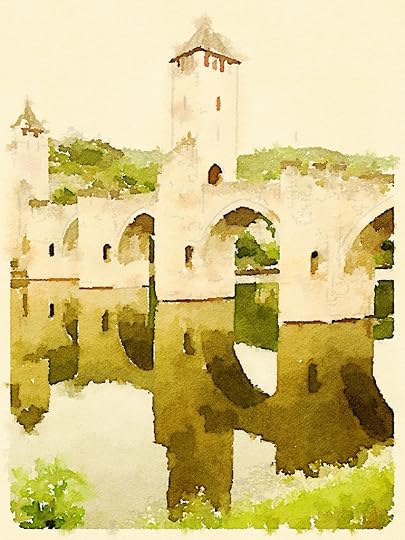
Pont Valentre via Waterlogue © Harold Davis
Related stories: Valentre Bridge and Impregnable.
Making my way to an overlook above a Bend in the Dordogne River on a misty day, I carefully shot the multiples needed to create a panorama.
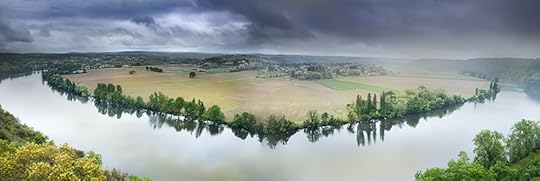
Bend in the River © Harold Davis
Visiting Bourges, I was impressed with the still-unfinished grand cathedral, a World Heritage site and one of the most impressive examples of 13th century high Gothic style—but more impressed with the light on the cathedral as seen through my Window in Bourges!

Window in Bourges © Harold Davis
Related story: France category on my blog.
Back home, I photographed the sacred and the profane; namely, San Francisco’s Grace Cathedral, a restored temple to Henry Ford’s assembly line, and models in motion. I particularly enjoyed choreographing in-camera multiple exposure techniques with models to create striking, painterly effects.

Graced with Light at Grace Cathedral © Harold Davis

Ford Richmond Plant © Harold Davis

Tender Dance (via iPhone) © Harold Davis

Wheel of Life © Harold Davis
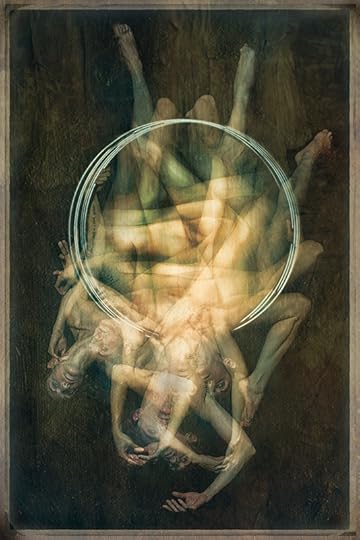
Falling © Harold Davis

Dance of the Seven Veils #2 © Harold Davis

Passion © Harold Davis

Les Desmoiselles © Harold Davis

What rough beast? © Harold Davis
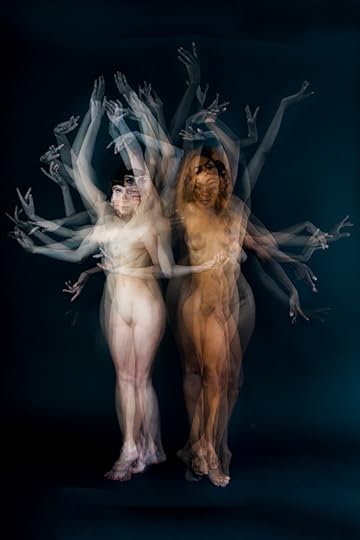
Kali © Harold Davis

Gates after Rodin © Harold Davis
Related stories: Tender Dance; Wheel of Life; Falling; Dance of the Seven Veils #2; Passion; Les Desmoiselles; What Rough Beast; Kali; A Rorschach for MFAs.
Over the summer I taught flower photography and digital black & white in Heidelberg, Germany. I had a great group of students, and a wonderful time getting to know Heidelberg and exploring the area.
The Old Bridge in Heidelberg was the first bridge across the Neckar River, and is still in much use today. It’s a great subject for black and white.
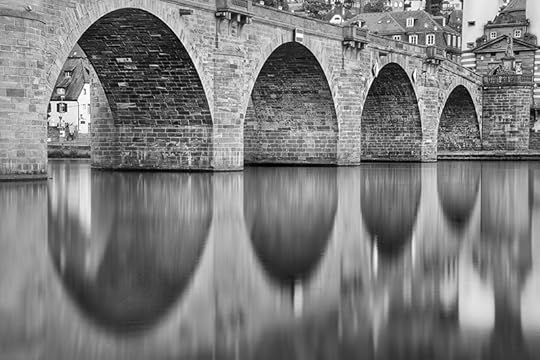
Alte Brucke, Heidelberg © Harold Davis
In contrast, the Great Hall at the old campus in Heidelberg is not much used except ceremonially; I was lucky to be able to take my time photographing in this historic place.

Great Hall, Heidelberg © Harold Davis
My hosts made sure I visited many local attractions, including Speyer cathedral in a city along the Rhine River not far from Heidelberg.

Speyer Cathedral (via iPhone) © Harold Davis
While I was in Germany, Germany won the World Cup. This iPhone still life composition of refracted wine glasses shows just a small bit of the celebrating that went on.

Wine Glasses © Harold Davis
Related stories: Germany category on my blog; Cheap shots; More cheap shots.
My next trip was to New York for some meetings and appearances related to a photography trade show. I’m of the general opinion that life in New York City has some resemblance to a stage show. At the very least, New Yorkers are definitely into appearances—so when I was able to sneak away from business and practice my craft of photography in Central Park at night it was fitting that New York seemed to me to be a stage.

Bethesda Fountain © Harold Davis
In Barcelona, I shot straight up at the amazing ceiling of Antoni Gaudi’s Sagrada Familia, and captured an almost endless internal spiral staircase in black and white.

Sagrada Familia © Harold Davis

Stair in the Sagrada © Harold Davis
Traffic and the lighting of a fountain on the Gran Via gave me a chance to practice photographing car trails at night in Barcelona, while the odd positioning of my hotel room gave a peculiar perspective for my 15mm lens in the crooked, old streets of the Gothic Quarter.

Gran Via © Harold Davis

Gotic Quarter © Harold Davis
In Morocco, I enjoyed photographing the great outdoor marketplace, the Jemaa-al-Fna, in Marrakech at night and the sand Kasbahs on the far side of the Atlas Mountains. When it rained in Rabat, my iPhone was ready to help me capture the view through the bus window.

Rain in Rabat © Harold Davis

Jemaa-al-Fna © Harold Davis

Market in Marrakech © Harold Davis

Castle Made of Sand © Harold Davis
Related stories: Jemaa-al-Fna; Market in Marrakech; Castle Made of Sand. After delays at Casablanca airport, I snapped an iPhone shot of leaving Morocco both lyrical and indicative of some travel fatigue.
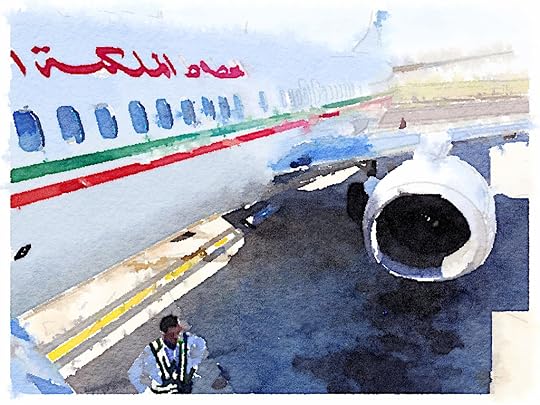
Goodbye Morocco © Harold Davis
Back home, I settled in to prove that one can make photos of the mundane as well as the marvelous; hence this image of a Venetian blind in my kitchen, drawn to allow bright sunlight to creep through.
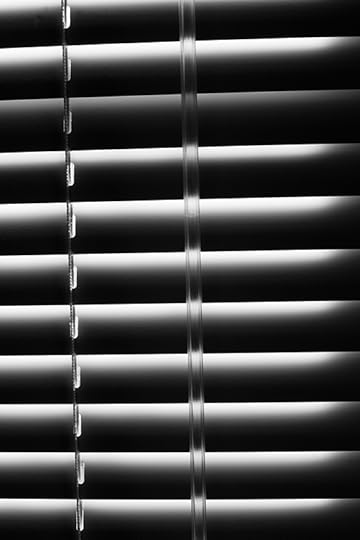
Blind © Harold Davis
Giving a Waves workshop on Point Reyes, California in December I was lucky to find a break in relentless rains and a stunning day for photography along the open Pacific Ocean.
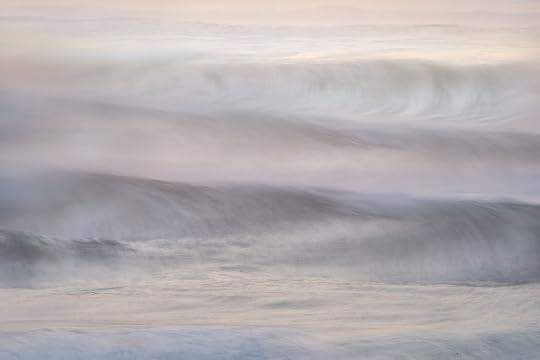
Waves © Harold Davis
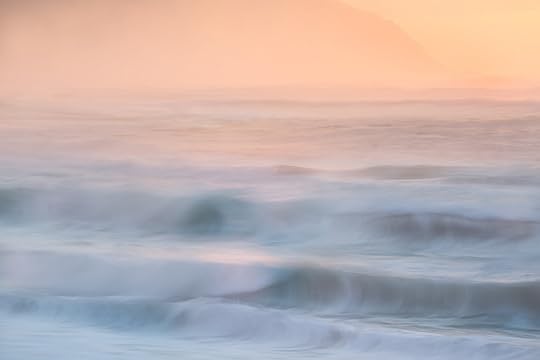
Sunset at Point Reyes Head © Harold Davis

Storm at Sea © Harold Davis
Related story: Photographing Waves.
Coming a full circle, as almost befits a spiral, my last photo is of a Nautilus Shell, shot in my studio. Apart from the iPhone images, my photography has greatly benefited from a high-resolution full frame DSLR sensor paired with some excellent glass from my sponsor Zeiss. In the case of this Nautilus, I used the Zeiss Otus 55mm f/1.4.
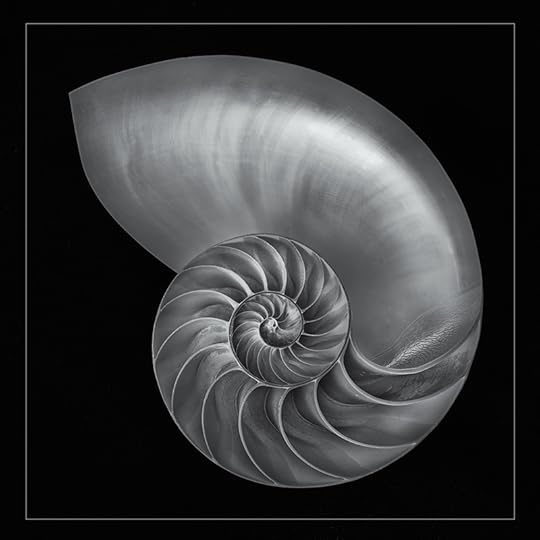
Nautilus © Harold Davis
Related link: Monochrome category on my blog.
As I mentioned at the beginning of this story, please feel free to comment. Please also consider creating your own best-of list, it is a great way to learn more about your work, and to practice your editing skills!
December 24, 2014
Falling Water
Recent winter rainstorms have battered the San Francisco area in Northern California with much needed rain. In a break in the weather I decided to hike to Cataract Falls on the slopes of Mount Tamalpais. Usually when I visit this area following a heavy downpour the creek is running muddy and is heavy with run-off. This time, the rain had been persistent and long-lasting enough over many days that all the mud had run its course, and the creek was clear, with pure white cataracts. The lighting was bright and overcast, and made no significant shadows.
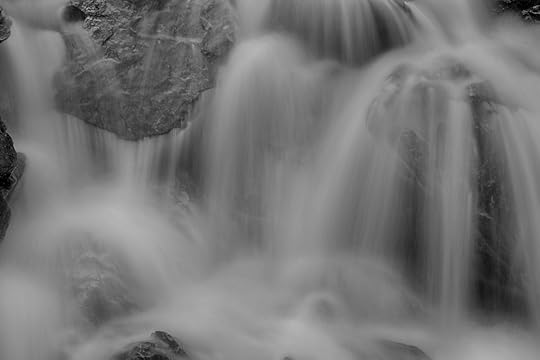
Falling Water #5 © Harold Davis
I set my tripod up beside the creek, on a spot where I could look up at the primary falls, and took a few establishing shots up the creek and down the creek. Then I stopped to simply be present in the magic of moment of time and place.

Falling Water #4 © Harold Davis
It came to me that I didn’t need to make another image of this waterfall as it stood in the reality of the world. Instead, I became interested in the ever-changed gesture of water that I saw, very simple, and always in black and white.
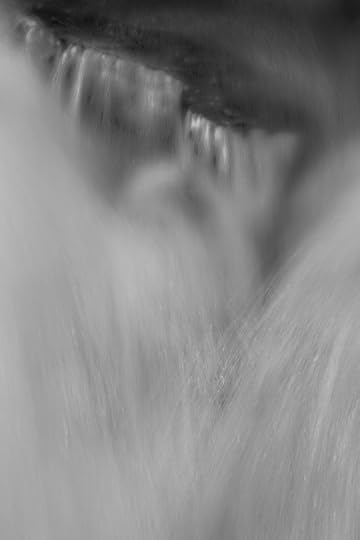
Falling Water #3 © Harold Davis
This kind of image is about the poetry of water in motion reduced to a minimum. Lengthening the exposure time—to a five to ten second duration—softens the water and allows the gesture the water is making to become the subject of the photo.

Falling Water #2 © Harold Davis
It’s not about a place, but is discovery of an archetype and an abstraction. As such, there’s a commonality in approach and technique to Photographing Waves.
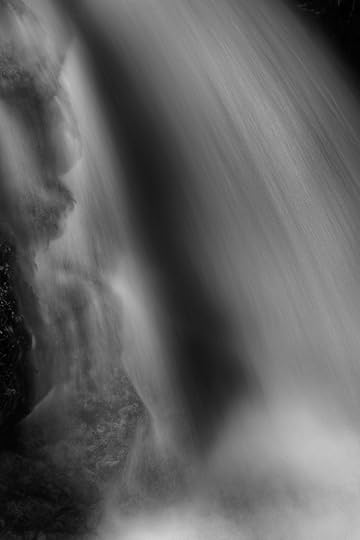
Falling Water #1 © Harold Davis

